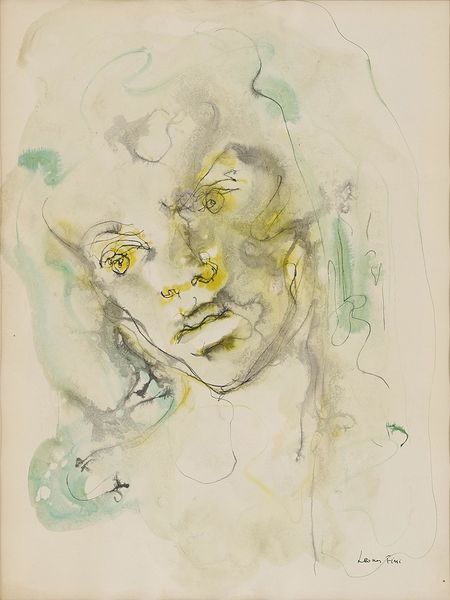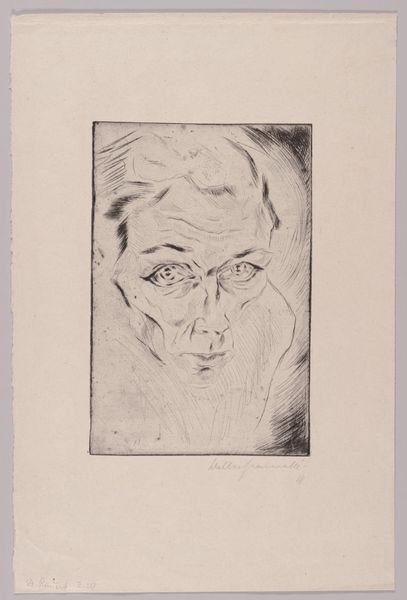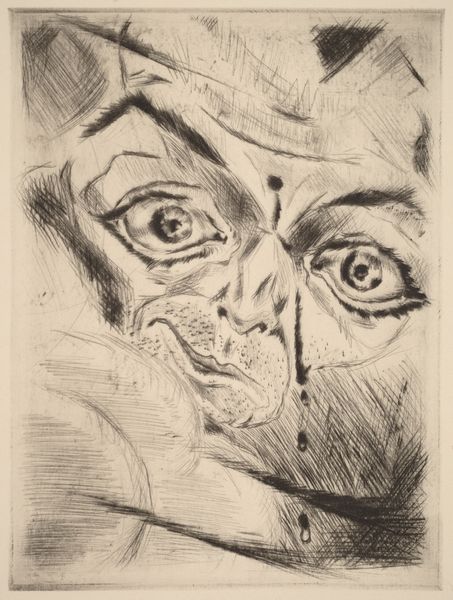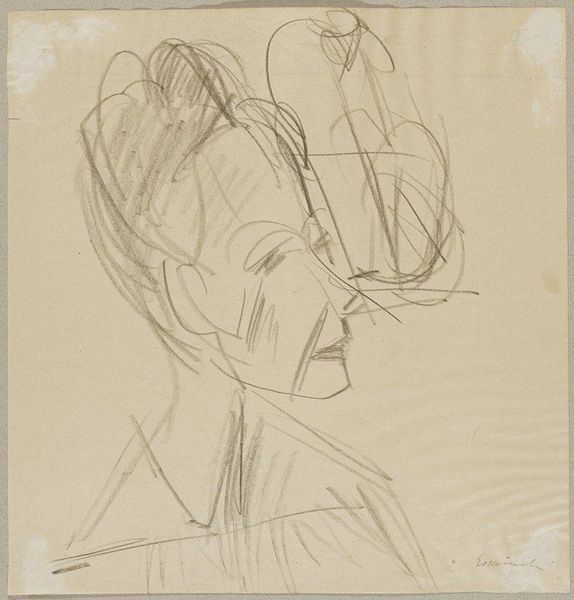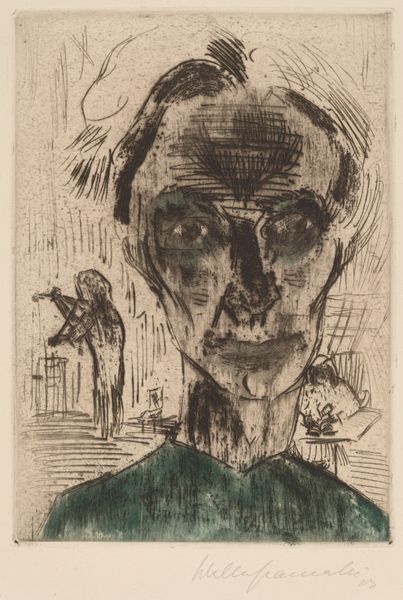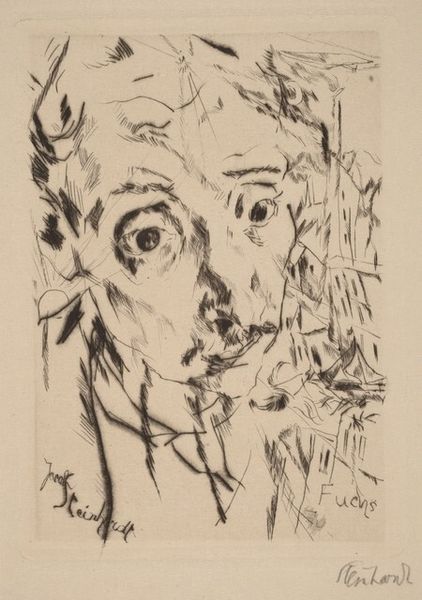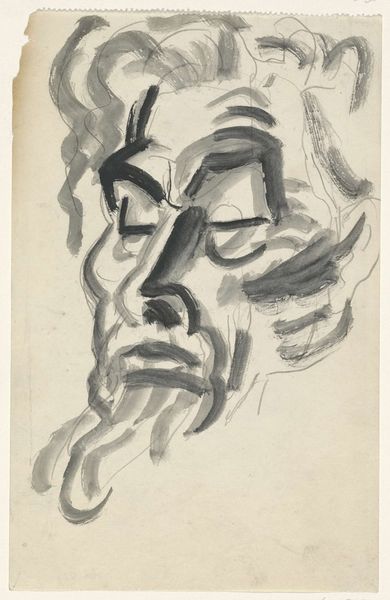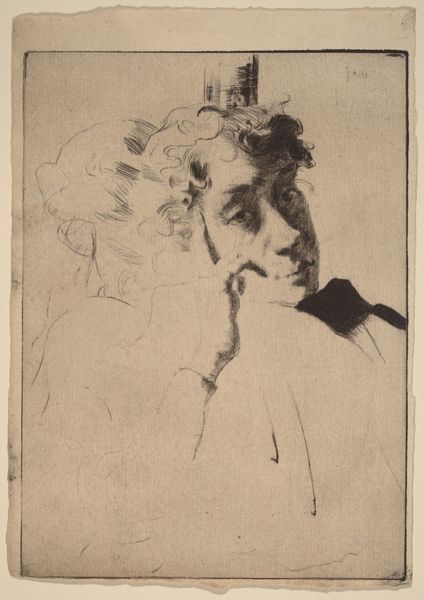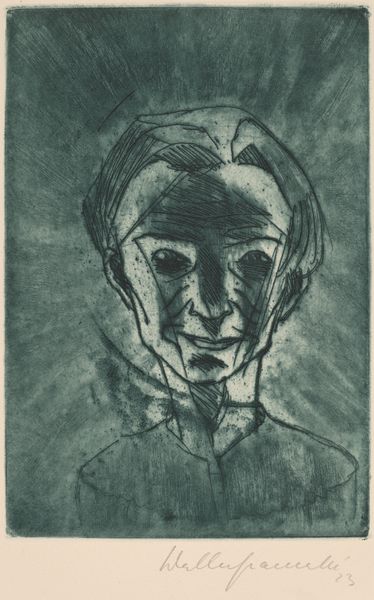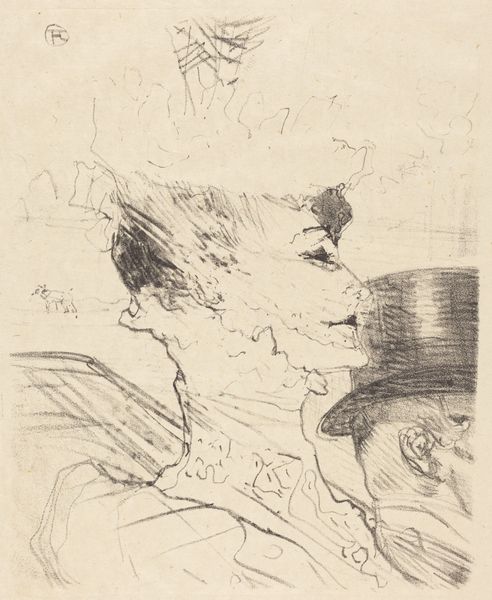
Die grosse Angst (Selbstportrat, Kopf im Halbprofil nach rechts) 1918
0:00
0:00
print, paper, watercolor
#
portrait
#
self-portrait
# print
#
german-expressionism
#
figuration
#
paper
#
watercolor
#
expressionism
#
line
#
watercolor
Dimensions: sheet: 30 × 23.81 cm (11 13/16 × 9 3/8 in.)
Copyright: National Gallery of Art: CC0 1.0
Curator: The use of fractured lines immediately strikes the eye, doesn't it? Note how Gramatté employed a web of jagged lines to delineate the form of the head and hand. Editor: This is "Die grosse Angst (Selbstportrat, Kopf im Halbprofil nach rechts)" by Walter Gramatté, made in 1918 using watercolor and other print medium on paper. The distorted expression and the almost sickly coloration evoke a feeling of unease. What do you see in this piece? Curator: The formal arrangement of elements underscores the psychological state of the artist. The swirling lines above the head, for instance, seem to externalize internal turmoil. Do you notice how the gaze, though directed outward, feels incredibly inward and trapped? Editor: Yes, the eyes seem both wide and unfocused. I am struck by the color. Can you talk more about its effect? Curator: The use of an unnatural color palette – the greenish skin tone against the lilac background – creates a sense of alienation. The effect disrupts conventional notions of beauty and challenges our expectations for portraiture, directing attention to emotional content instead. Editor: So, rather than reflecting reality, the form and color serve to amplify the feeling of angst. It makes the artwork far more affecting. Curator: Precisely. The discord created by the broken lines, sickly palette, and distorted forms, serves to illustrate a state of psychological distress and internal struggle, which resonates through his choice of color, as much as through form. It seems Gramatté constructed the expression of inner torment. Editor: I never thought of it that way; focusing on the formal elements to understand the emotion conveyed in the work, and how those are connected. Thank you.
Comments
No comments
Be the first to comment and join the conversation on the ultimate creative platform.

